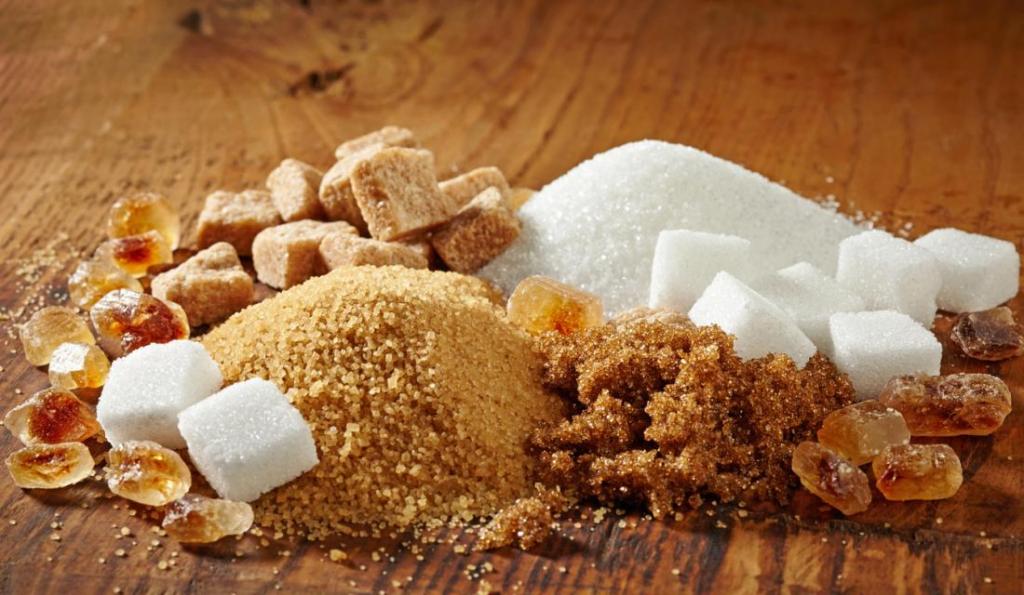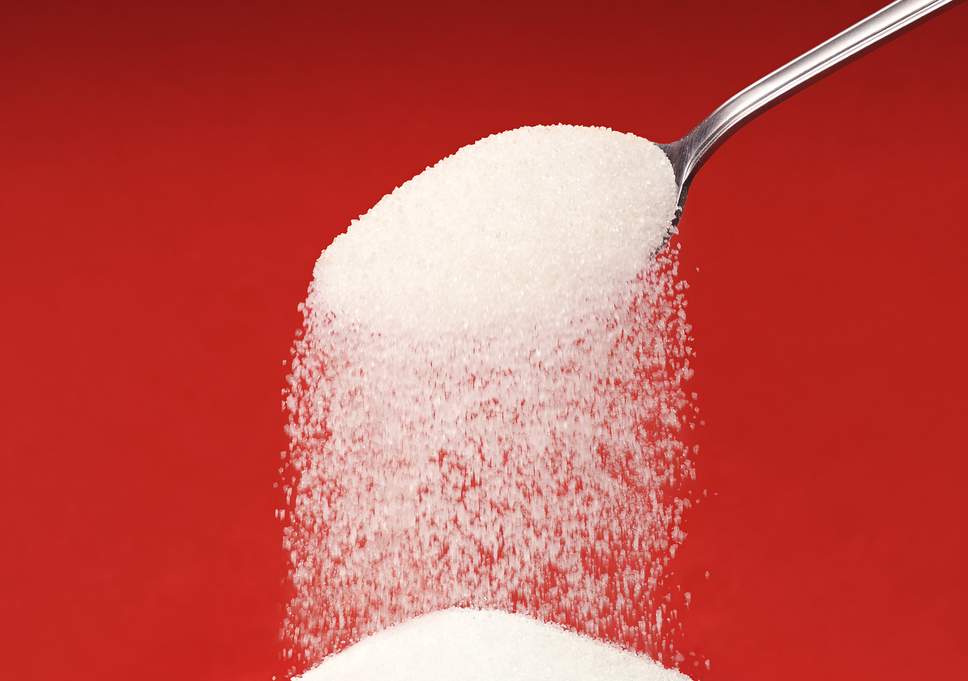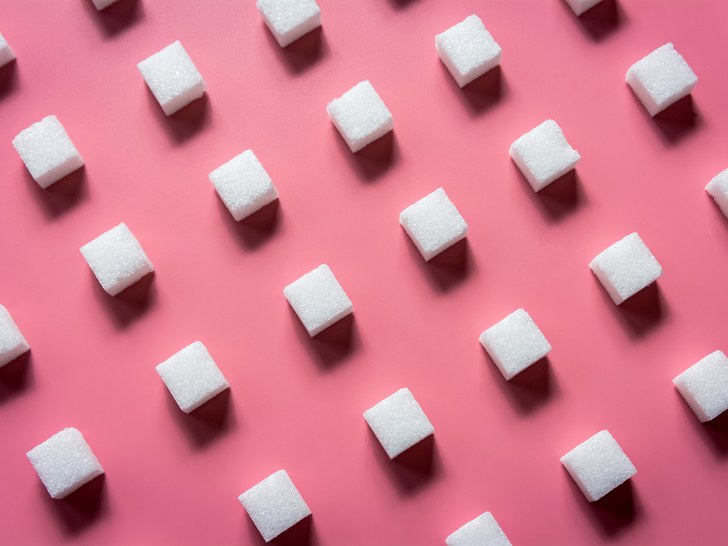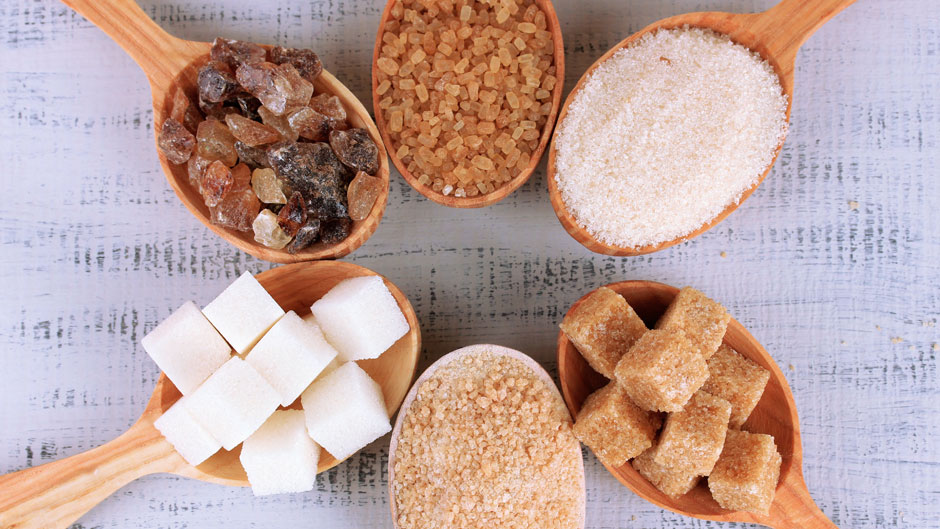Glucose and sugar. Many between these concepts habitually put an equal sign. But is it right? Is glucose and sugar the same thing? The answer to this question will be devoted to this article. We will present the characteristics of these components, find their similarities and differences. Define the main varieties of sugars, their benefits and harm to the body.
What are sugars?
What is the difference between sugar and glucose? To answer this question, we need to imagine what sugars even exist in nature, how they are related.
The very first in the classification are simple sugars, monosaccharides. There are three names:
- Glucose. This is dextrose, grape sugar.
- Fructose. Levulose or fruit sugar.
- Galactose.
Next come disaccharides (or complex sugars). The most important in the category are the following:
- Sucrose. This is the full name of table sugar. Fructose + glucose.
- Maltose. Name of malt sugar. The substance consists of two molecules of the same glucose.
- Lactose. Also known as milk sugar. The name of the compound is glucose with galactose.
It should be noted and such a group as mixed sugar. Among the most common:
- Brown, yellow sugar. This is the name of crude sucrose.
- Invert sugar. Name of sucrose degradation product. It contains equal proportions of fructose and glucose.
- Honey is an invert sugar of natural origin.
- High fructose syrup - contains both glucose and fructose, but the latter here is in the vast majority.
Now let us turn to a more detailed description.

Glucose
To outline the difference between sugar and glucose, we need to get acquainted with the characteristics of each of these elements.
Glucose is a sweet substance. By its nature, it is a monosaccharide (simple sugar), a carbohydrate. This element is found in large quantities in plants. In particular, fruit, berry juice. A lot of glucose in the grape.
The human body can independently receive glucose - as a result of the breakdown of sucrose. The latter is regular table sugar. Our body breaks it down into glucose and fructose, respectively.
Glucose is sugar in nature. As for table sugar, then, as we have already noted, it consists of fructose and glucose. The latter is small crystals, odorless and colorless. Glucose quickly dissolves in water. It has an intense sweet taste. But on this indicator is slightly inferior to sucrose. The intensity of sweetness in glucose is less than about half.
Glucose is a useful nutrient for the human body. This is a carbohydrate, thanks to which we get about 50% of vital energy. In addition, glucose protects the human liver from toxins. In the same organ, the element is deposited "in reserve" in the form of a special compound - glycogen. It can at any time be converted by the body back into glucose. And then used for its intended purpose.
Should I use glucose instead of sugar? Yes, on the recommendation of your doctor. It should be noted that glucose dissolved in water is also used for medical purposes. Intravenous droppers with this component are known. This is how the human body is supported in severe diseases, in complex conditions (after an accident, surgery).
A glucose dropper makes it easier to tolerate food poisoning or severe intoxication. They use it to diagnose diabetes. A large amount of glucose is injected intravenously, after which specialists monitor the patient's reaction to this.

Sugar
We continue to derive the difference between sugar and glucose. Sugar in this vein is an abbreviation. So briefly referred to as sucrose, a compound of fructose and glucose. Or what we used to see in the kitchen - table sugar, refined sugar.
We have already noted that this element, once in the human digestive system, breaks down into two components - fructose and sucrose. Because of this, it belongs to disaccharides. Indeed, in the composition of sucrose there are two varieties of carbohydrates, into which it is split.
What is the difference between glucose and sugar? Glucose is a component of table sugar. As for the latter, its most popular varieties today are beetroot and cane. These are the "standards", which are almost pure sucrose without impurities.
Sucrose, like glucose, is a valuable nutrient for our body. A source of energy and vitality for the body. Where is sucrose contained? This is an element of plant origin - it is found in fruits, berry and fruit juices.
The largest amounts of this carbohydrate are found in cane and sugar beets, respectively. Therefore, these plants are a valuable raw material for the industrial production of tableware.
What is the difference between sugar and glucose, judging by their appearance? Here, these carbohydrates are practically indistinguishable. Sugar - these are the same crystals without color and odor. They also dissolve well in water. They have a sweet taste. The difference here is only in the intensity of taste. Sucrose will be twice as sweet as glucose.

Reed or beetroot?
Can sugar be replaced with glucose? The answer depends on what goals are being pursued for this. After all, sucrose contains both glucose and fructose. If in a certain case fructose is harmful to the body, then one can use glucose to sweeten food.
Is there any difference between cane and beet sucrose? Both sugar can be found in stores in the form of crystals and powders. Cane sugar can often be sold unrefined. He will then have not the usual white, but brown.
There are a lot of prejudices associated with cane sugar. In particular, it is considered more beneficial to the body than ordinary beetroot. But actually it is not. By their properties, these varieties of table sucrose are almost identical.
There is evidence that cane sugar is rich in B vitamins. There is some truth in this statement. But it should be noted that the content of vitamins is negligible here, which is why it does not have any effect on the human body.
Another reason why people prefer cane sugar to beet sugar is the unusual taste of the product. But even here the opinions of nutritionists are mixed. Unrefined, unrefined cane sugar has a peculiar taste. But we must remember that, without going through cleaning, the product may contain harmful impurities.
Beet sugar is not sold unrefined. Due to the fact that this product in its unrefined form has both an unpresentable appearance and a strange taste.
Fructose
Let us take a closer look at this element of sucrose, around which a lot of controversy unfolds. The fructose molecule is very similar in appearance to the glucose molecule. But the small difference that exists between them makes them dissimilar elements.
Fructose is not recognized by any of the body systems that respond to glucose. In particular, this sugar does not produce the necessary "satiety hormones." Fructose is also ignored by the pancreas, which produces insulin.
Our body does not know how to accumulate fructose in the form of chains, as it happens with glucose. There are no independent ways of splitting this element. To use fructose for its intended purpose, the body has to enter it into the biochemical glucose pathways by enzymatic transformations. For example, in glycolysis. Similar processes occur in the liver, but with an interesting nuance.
Fructose does not turn into glucose here. It enters the processes of glycolysis approximately in the middle of the path. When glucose molecules are already divided into two components. Of course, ultimately, both fructose and glucose will be split and converted into the universal energy of the body. However, fructose jumps immediately to the main regulatory stage of glycolysis, skipping its initial stages.
And this process is characterized by a negative feedback. What does it mean? If there is too much available energy from glucose, such a link blocks its amount. With fructose, this can not be done due to the already described pass.
In other words, if there is too much glucose, our body is able to stop its breakdown. With fructose, this is impossible. If there is a lot of glucose, it remains in the liver in the form of glycogen. If there is a lot of fructose, it will all be processed.
The increased use of fructose is fraught for a person with uncontrolled weight gain, obesity. In addition, as we have already noticed, in response to a large intake of fructose, hormones of satiety are not produced, which is why the feeling of hunger does not go away.

Obvious difference
How to make glucose from sugar? Our body is already coping with this task perfectly. It can break down sucrose into fructose and glucose without help.
Can a layman determine where sugar is and where glucose is? As a rule, no, they are almost identical in taste. This is the same loose powder, colorless crystals. Glucose may seem less sweet to taste than regular table sugar.
The difference may also be in the fact that it dissolves faster in the mouth, only on the tongue. This phenomenon is due to the fact that glucose is a simple sugar. In fact, it begins to be absorbed into the blood while still in the oral cavity.
Feature Comparison
Is there a difference in blood sugar and glucose? In fact, no. Blood sugar is precisely the level of glucose in it. Which is true. After all, glucose by its very nature is precisely sugar, a monosaccharide. And this is a broader concept than table sugar (in this case, it means only sucrose).
What is the difference between these elements? The first thing to say is glucose is a monosaccharide, a simple carbohydrate. And sugar (sucrose) is a complex carbohydrate, disaccharide. Let us turn to the structure of their formulas. Only one carbohydrate will be present in the glucose structure. But there are two of them in sugar. Moreover, the second is just glucose.
As for the natural sources of these elements, they are largely similar. They are found in fruits and fruits, natural plant juices. But the process of technical production of elements is different.
How is sugar and glucose produced? What is the difference? Making glucose is a more time-consuming process. Sugar is produced easier - from plant materials (sugar beets or cane). Glucose is industrially produced by hydrolysis of a completely different product - starch or cellulose.

Common features
Here are a few key factors that combine sugar (more precisely, sucrose) and glucose:
- Glucose is necessarily included in the molecular formula of sucrose (regular table sugar).
- Both substances have a sweet taste.
- These two elements are inherently carbohydrates.
- Both glucose and sucrose are colorless crystals that are odorless.
- Both elements of plant origin - they are extracted from berries, fruits, natural juices.
Major differences
Sugar replaces glucose? To some extent, yes. After all, ordinary table sugar is a combination of glucose and fructose.
We now highlight the main differences between these elements. Glucose is distinguished by the following:
- Monosaccharide (only one carbohydrate is present in the molecular formula).
- Twice less sweet than sucrose.
- In industrial production, it is produced either from cellulose or from starch.
But the main characteristics of sucrose:
- Disaccharide (two carbohydrates in the molecular formula).
- Twice sweeter than its component - glucose.
- Under industrial conditions, it is mainly harvested from sugar beets or cane.

How many grams of glucose are in sugar?
We figured out that sucrose is glucose and fructose. But in what proportions? In table sugar, the carbohydrate content is 99.98%. Of this, 100.1 g of product contains 99.1 g of sugars. Glucose is about half.
And one more popular question. In grams - 75 glucose. Is that how much sugar? 4 tablespoons of regular table sugar.
How much glucose is in a spoonful of sugar? Accordingly, half the mass. So, if on average, a tablespoon of sugar is 25 g of the product, then glucose in this mass is from 12 to 15 g.
Benefit and harm
We determined that both sucrose and glucose are good for our body. These are sources of carbohydrates, vital energy. Why do nutritionists warn us that consuming large amounts of sugar is harmful? After all, we actually use more elements necessary for vitality?
Here we must remember that sugars, carbohydrates are found not only in table sugar, but also in the large mass of foods we eat. Even if they do not have a pronounced sweet taste. All plant foods contain sugar (fructose, glucose), as well as starch (it is from it that glucose is synthesized). But we tend to further sweeten this food.
Note the pattern: that food that a person does not salt, he is inclined to sweeten with sugar. And what is the result? There is an excess of salt and sugar in our body. In this case, sucrose really becomes harmful. It enters the body in volumes, sometimes several times higher than the level that our organs can process.
And these elements do not disappear from the body - their excesses are not excreted. The body solves this problem in its own way: turns sugar molecules into fat molecules. And sets them aside in reserve. Thus, problems with overweight and obesity begin.
Why do people for the most part have such an addiction to sucrose, sweet foods? It comes to us from ancient times. For our ancestors, the sweet taste of vegetables and fruits was a signal that they found a tasty and healthy product. It remains in the genetic memory.
We must not forget that earlier sugar was very difficult to obtain. Therefore, it was considered a value, a rare delicacy. Today the situation has changed. Sweets, pastries, goodies are available in any store. Sugar is one of the most affordable and common foods. But human taste buds still regard sweets as exceptionally healthy and rare food.

To summarize. Both glucose and table sugar are saccharides by nature. The difference is that glucose is a monosaccharide (simple sugar). And table sugar is disaccharide, sucrose. What are its two constituent elements? Already called glucose and fructose. They are contained in sucrose in approximately equal amounts.